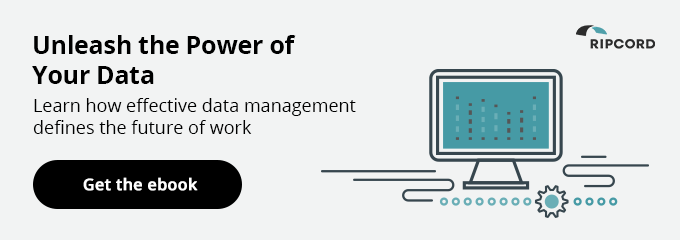
Future-Proofing Your Office: Best Practices for Digitizing Data Management
Smart document and data management means one thing: digitization.
As the global workforce has come to see clearly since the outbreak of COVID-19, relying on documentation that requires physical shipping, handling, and human delivery is not only archaic but potentially dangerous as well.
Digitizing paper documents and other data also saves organizations time, money, space, and logistical headaches. However, like other major business moves, it should be undertaken properly for the most successful outcome. Below, we outline the top five best practices for data digitization to help your organization go paperless the right way.
Know Your Goals
Before you begin any digitization project — no matter how large or small the amount of data to be converted - it's best to lay out what you hope to gain from the switchover. Digital data management systems have much to offer organizations, but for the best chance at having outcomes line up with expectations, a business must identify specific goals.
Are you seeking a quick, cheap fix with a zero learning curve? In that case, digitization is probably not right for your business at this time. Do you want to make previously on-paper-only information easy to find in a secure, central database, quickly accessible by those to whom you grant access? If so, digital data management is likely a good fit for your company.
Still, it's important to continue to keep your objectives in mind even once you've determined that digitization is the way you want to go. "Technology should never drive digital projects," shared Alyce L. Scott, a lecturer at San Jose State University. "Goals should be determined first, and only then should the appropriate technology be selected in order to meet a project’s objectives."
Predetermine Success Metrics
Another question company leadership ought to ask themselves before embarking on a full digitization project is how they plan to measure the endeavor's success. Perhaps it's by the newly shareable, robust nature of what were once fragile, single-copy paper documents from decades or centuries ago. Or perhaps it's by the level of granularity their team is now able to successfully achieve in sub-second searches among hundreds or even thousands of files. Maybe it's in the cash saved, over the long haul, from not having to waste valuable company time having employees sift through banker's boxes in a warehouse. Whatever it is, an organization should make sure to set forth its measurements for a successful outcome before the start of a project and keep those measurements the same once the project is complete so that the organization can properly measure success.
Don't Convert What You Don't Need
With Canopy, Ripcord's proprietary, cloud-based digitization platform, your data storage capacity is far greater than it ever would have been with paper documentation, but that doesn't mean you have to port over everything you've got. It's a good idea to use the data management solution undertaking as an opportunity for house cleaning as well as a move toward greater efficiency. Perhaps, then, those reams of board meeting minutes from the spring of 2001 when you had an overly zealous administrative assistant can go the way of the shredder, after all — without ever seeing the light of a scanner.
Consider Your Documents' State
At Ripcord, we're trained in and adept at the proper handling of fragile documents. Our robots use air, not human touch, to lift and position papers. Still, an organization considering the digitization of historic or otherwise delicate material should first take into account the condition of the documents. Papers that are coming apart, for example, may require preservation work before robotic scanning. In the case of some bound material, the spine may need to be professionally removed for digitization to begin.
Get Necessary Permissions
In some cases, the question is not whether a document should be digitized, but whether the digitization is permissible in the first place. Material that is not part of the public domain (where there are no exclusive intellectual property rights) may not be made digital without the express permission of the copyright holder. Thus, if written or recorded material an organization wishes to digitize does not belong to it outright, the organization will need to take the steps necessary to legally make it part of its cloud-based data repository.
/Ripcord%20Logo%20-%20Color%2011.png?width=2000&height=620&name=Ripcord%20Logo%20-%20Color%2011.png)




